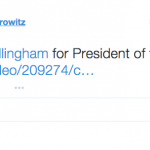When is a premium site not a premium site?
The Dallas Morning News – America’s 12th-biggest paper – woke up last week and realized, like Basil coming back to the hotel, that its wall was all wrong.
After more than two years, The News announced that it was taking down its “hard” paywall, and replacing it with two versions of its site: a standard, free one, and a premium one with “a more visual experience” and fewer ads, but no premium content.
Early predictions for this premium site have been pessimistic at best. In the Columbia Journalism Review, Ryan Chittum wrote that if The News “gets subs [subscribers] into the triple digits, it will have beaten the odds.” Josh Benton of the Nieman Lab pegged his estimate at zero.
They’re probably right. Print subscribers may well activate their digital subscriptions, but if any online-only readers want free content with a better visual experience, they can – and almost certainly will – download AdBlock or something like it.
This all sounds oddly familiar to Canadian media types.
In 2008, The Globe and Mail took down its paywall and made everything free (disclosure: I interned at the Globe earlier this year). Those who wanted bells and whistles could pay forGlobe Plus, which included access to an e-edition of the paper, special tools for investors and access to the archives – but little premium news content.
This was untenable, and four years later – years during which the Globe also launched a major redesign, got a new editor-in-chief and studied metered paywalls – the paper rolled out Globe Unlimited, whose subscribers do get premium content, which is heavy on business and politics articles. (Non-subscribers get 10 free articles a month before hitting the wall.)
The way editor-in-chief John Stackhouse told it to a British audience last month, Globe Unlimited is doing well – it has around 100,000 subscribers, “tens of thousands” of whom are digital-only. It’s too early to tell how well this will work in the long run, but nearly a year after it launched, Stackhouse doesn’t sound worried. (It hasn’t saved the Globe from the axe – more than 60 employees took buyouts earlier this year.)
If the executives at The News aren’t already looking at how Globe Plus gave way to Globe Unlimited, it may be too late. The Globe found a model that worked for them, but it took them four years. The News may not have that kind of time.














